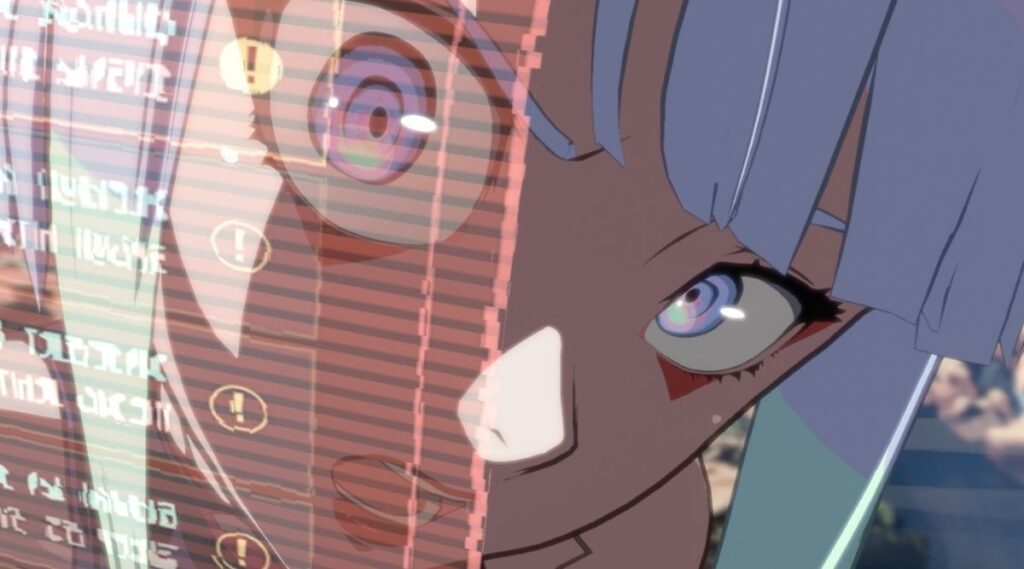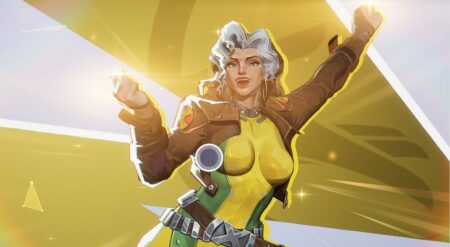As the final character in season 4 of GUILTY GEAR STRIVE, Lucy wraps up the run with a bang. While her announcement was a surprise, she’s Guilty Gear’s first collaboration character, and she brings a fun kit that promises speed, while also delivering a ton of personality, crafting a space for her in the game, as she tries to find her way home to Night City.
Before we dive into what Lucy brings to her matches, we have to talk about the master-class effort done by Arc System Works to deliver an authentic representation of her character. Rather than simply craft a move set that feels right for both her and the game, Arc System Works goes above and beyond to make Lucy feel like an extension of her core character.
Lucy’s intro animation at the start of fights kicks off the exemplary attention to detail put into her presentation. Beginning in an ice bath during a net dive, we see her visibly struggling before jumping into the net to follow her avatar to her new home. Along the way, we see profile images of David, Rebecca, Kiwi, and the rest of her crew.
Lucy feels completely authentic in GUILTY GEAR STRIVE.
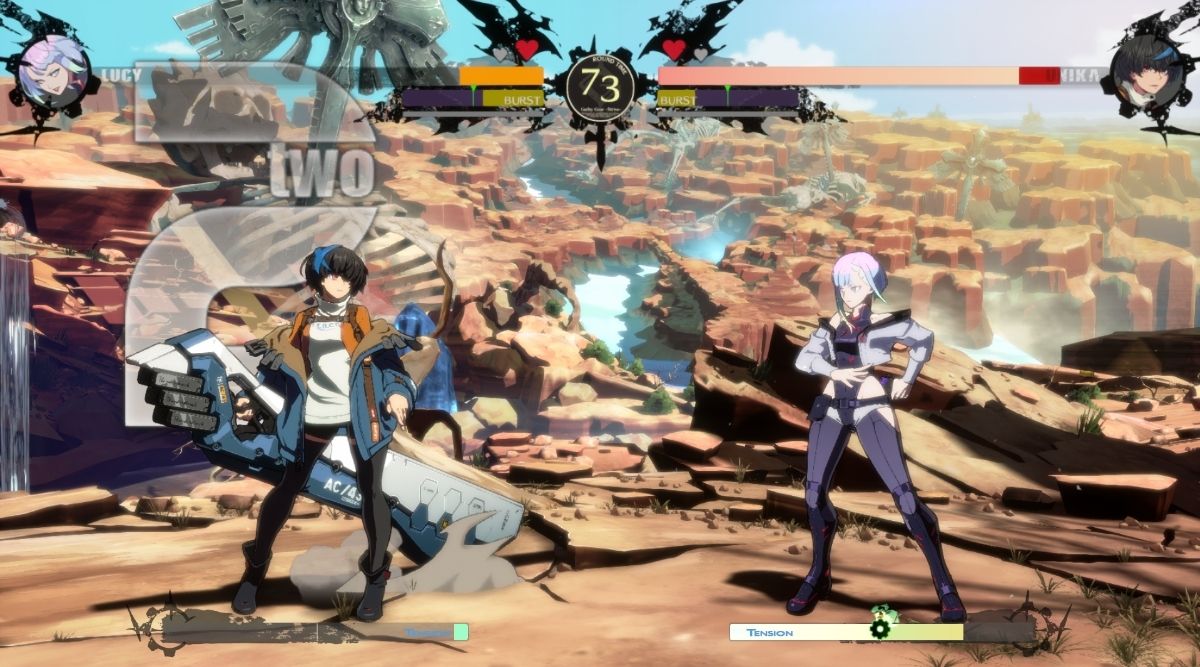
Once Lucy arrives in battle, everything from her dialogue to her attitude feels completely authentic to her. Her blunt, analytical discourse with the other fighters frequently rubs opponents the wrong way, creating a bit of extra reason for the sudden brawls.
Lucy’s dialogue is also filled with the lexicon of Night City. Referring to things as “nova” or calling foes “choom” brings out the details for Lucy’s voice. And even if you are unfamiliar with Cyberpunk 2077 as a setting, the general gist of what she’s saying is easily inferred.
To give GUILTY GEAR STRIVE plenty of opportunity to let the character shine in her new setting, Arc System Works gave Lucy an extra-long, three-chapter arcade mode. Here, minor elements of her situation get surface-level explanations, like how she can hack individuals not sporting “chrome.”
Lucy’s final battle in arcade mode is too hard, but the journey there is filled with great interactions.
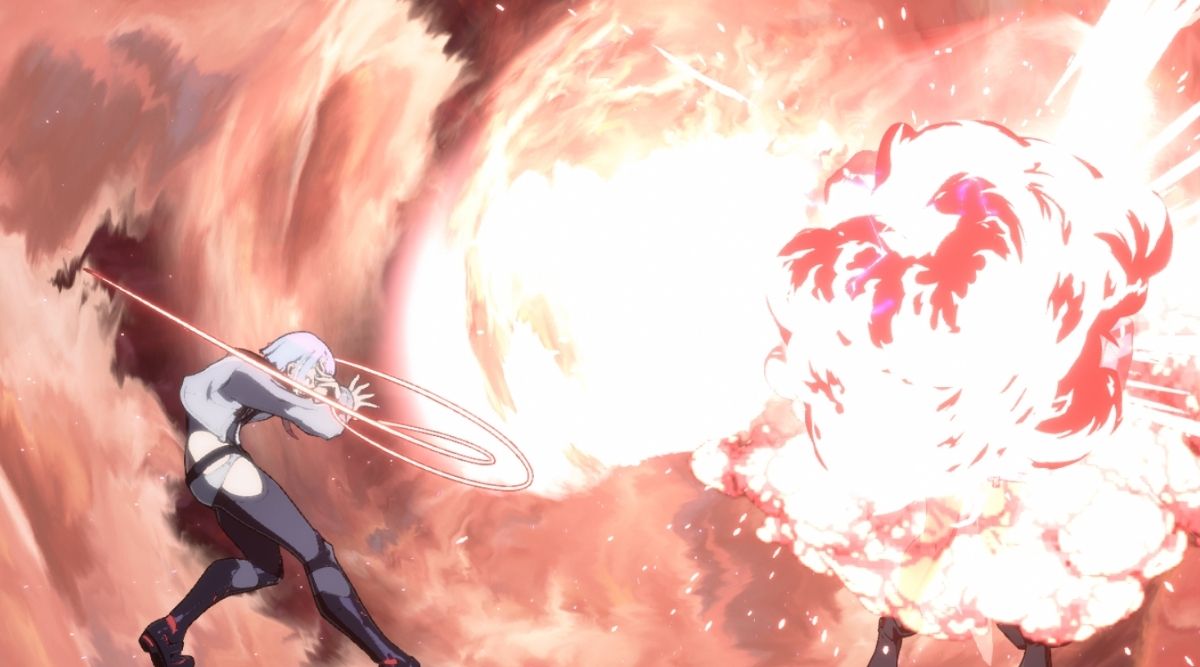
Some recurring characters get fun interactions with her as well. Axel gets the most time with her, creating a fun back-and-forth that gives Lucy someone to talk to, allowing her personality to be further explored. But through it all, someone is missing. A phantom at the edge of her brain that, due to losing her memories upon arrival, she cannot call forth. She just knows it’s someone incredibly important that she cannot afford to lose.
While this setup for Lucy’s motivation to fight on and get home isn’t new, it works especially well for her. Her singular concern for her love, David, motivates her through much of Cyberpunk: Edgerunners, making it easy to believe that her need to see him would persist, even if the memory of him was stolen.
Sadly, all of the character building and world exploration done in the arcade mode’s expanded experience is tarnished as it reaches its conclusion. Lucy’s final battle is unreasonably difficult. Certain elements of her final opponent are tweaked, making them incredibly difficult, bordering on unfair. This is one of the worst arcade finales I’ve ever experienced. The difficulty spike feels out of place with everything else the mode does, leaving an ending marred with unnecessary frustration.
Lucy’s long reach and pulls in make a double-edged sword in her distance game.
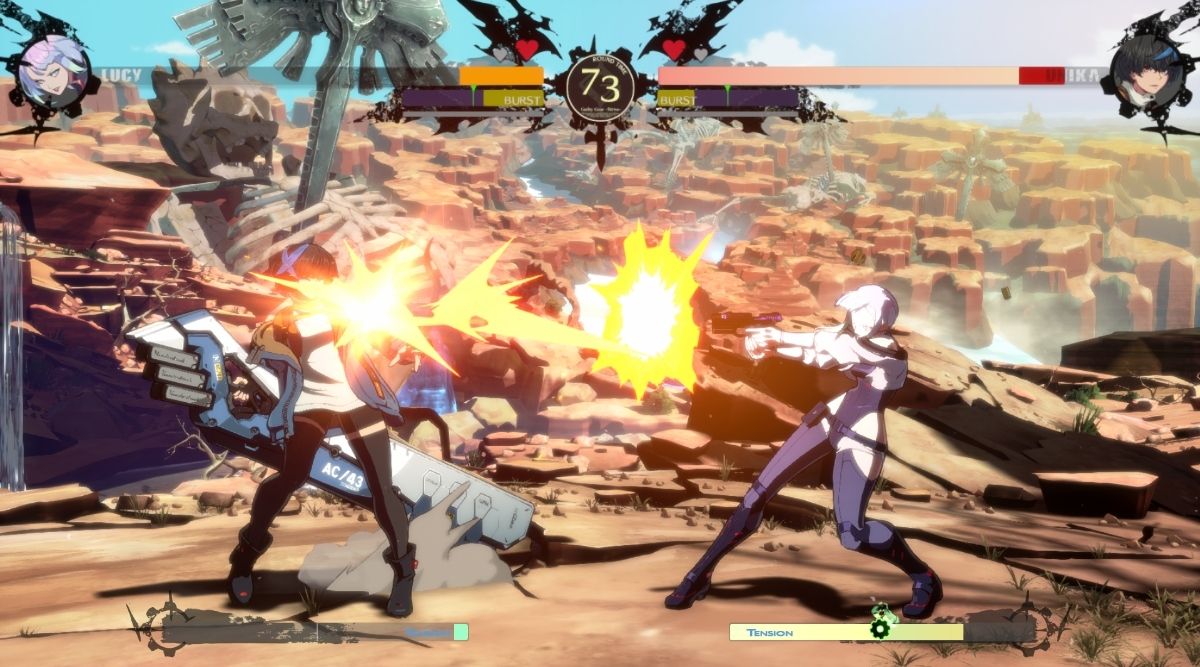
The final way Arc System Works brings Lucy to life is in her victory screens. Unique for every fighter in the game, she is seen analyzing data she’s hacked about her freshly fallen foe, while giving some commentary on her findings. Her discoveries and reactions are as eclectic as the cast itself, delivering a small, extra reward for players who score wins with her. It even recreates an iconic shot from Edgerunners into the sequence, adding a final layer of flavor.
Lucy utilizes high speed, reach, and mobility to keep foes at arm’s reach, allowing her to control the tempo of matches. She can also use certain combos to drag opponents close when she chooses, opening them up for devastating attacks. However, Lucy is a character that demands forthought, or some of her tricks can go awry.
Most of Lucy’s key attacks utilize her monowire. Giving her good reach, these moves help her keep foes honest. They feel great to land hits with, and some combos (forward + slash twice) have the property of drawing foes in. However, this element works on hit or on block. This can make it a double-edged sword, pulling a foe in, only to have them punish your failed hit.
This need for precision also exists in Lucy’s dash attack. A low-to-the-ground dash that ends with a kick, the move has a pair of potential follow-ups. Both a sweep or a mix-up attack can be executed, but timing needs to be done with care. Pushing the follow-up’s attack button too soon will see the initial attack nullified, and just the follow-up done; this can lead to sub-optimum results, or allow for surprises if done intentionally.
Lucy’s air game is exceptional in GUILTY GEAR STRIVE.
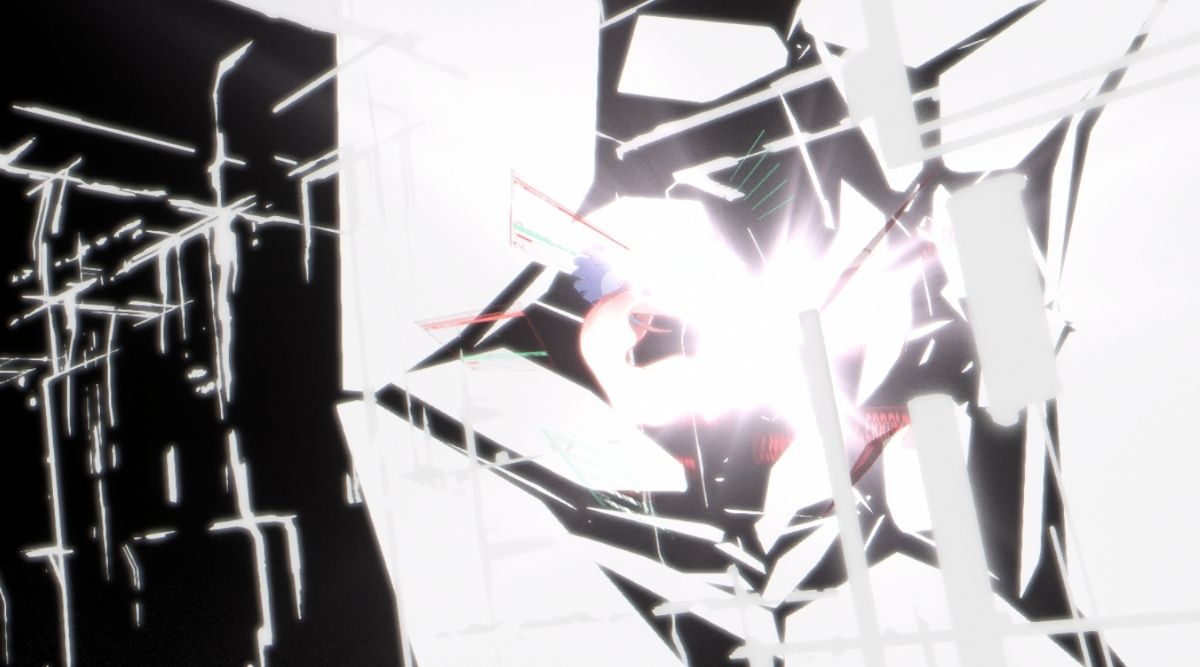
Lucy’s air game is exceptional. Her great reach with slashes gives her a strong vertical presence when in the air, and her air dust attack sees her use her monowires to pull herself sharply to the ground, slamming into foes and creating combo opportunities. She also has an exceptionally long air dash, allowing her to close on opponents from above with surprising speed.
Lucy’s sole long-range option is her pistol. Working off a classic fireball input, her gun fires a single shot, or a three-round burst if the attack button is held. This move is fairly weak, doing low damage and failing to hit crouched opponents. It is mainly suited for interruption rather than anything else, though it does feel cheeky to get that last shred of health off a foe with a quick shot.
Arc System Works went back to the personality well for Lucy’s supers. Unique, memorable, and effective, these two attacks stand out as being moves that will always be the highlight of any match you win with her. Her first move is Quick Hack.
Quick Hack is super fun to pull off with careful implementation.
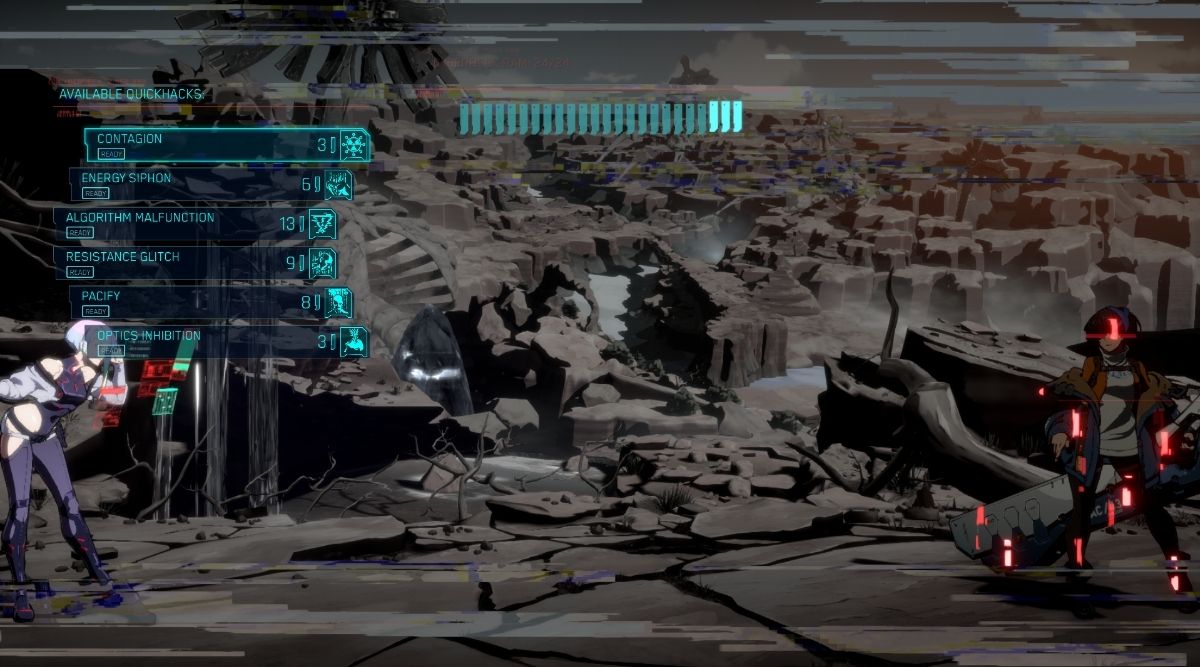
After completing the input and using 50 percent of her power gauge, the screen freezes for a set amount of time, and several options with numerical values appear. With only a finite number of points to spend, the player must select which hacks to implement. This must be done quickly, as the game only freezes for a few seconds.
While this move is super fun and cool to do, getting the full value out of it requires careful implementation. The opponent also knows what hacks Lucy selects, so you can expect them to alter their playstyle accordingly. This makes the when and how this ability is used critical.
Trying to execute it when an opponent will be vulnerable will make the more offensive options, hits registering as counters, or attacks gaining life steal, far more effective. By the same token, if you suspect your opponent is about to go on the offensive, implementing some of the hindering options, opponents’ attacks generate less tension, or obscuring Lucy from view, could be more beneficial.
Lucy is an example of how all collaboration characters should be implemented in fighting games.
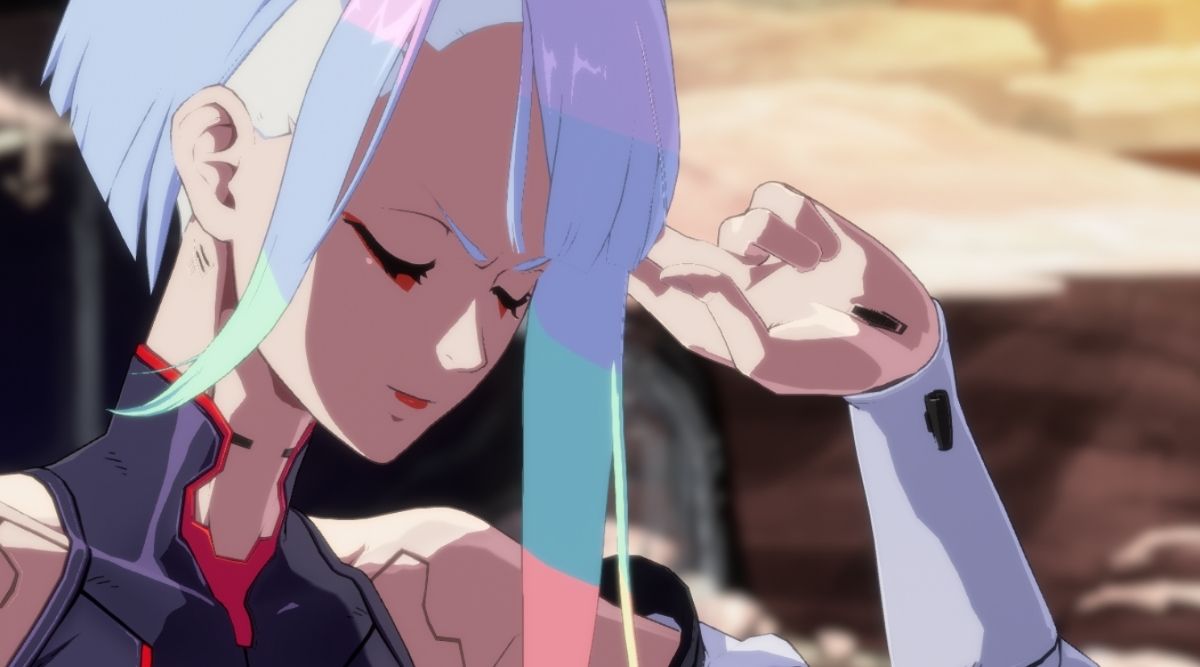
Lucy’s second super is unassuming at first, but serves as the final element of her precision-based kit. When used normally, it is a cinematic monowire attack that does solid damage and knocks a foe back. Useful, but uninspiring. However, if the player implements it with a full power gauge and the opponent is below a certain health threshold, it becomes much more than a whip attack.
Rather than knocking the foe back, Lucy entangles them in her monowire and initiates a brain dive. A cinematic plays out, showing her digital avatar soar towards a cube representing her foe’s mind and shattering it. Once back to the normal in-match view, her foe is seen, consumed by explosions, and the match is over.
This move looks fantastic and does strong damage. The fact that it kills a foe that meets the health threshold instantly gives it an added edge. While not as overpowering as a true instant kill, this maneuver does give Lucy a strong play against foes with damage-reducing elements to their kits.
Lucy is everything one can ask for, not just for a DLC fighter, but also as a collaboration character. Arc System Works delivers her personality and brings a portion of her world with her, with the same love and care they used in crafting her unique kit. Here’s hoping we can see more of this style of collaboration in the future.
Lucy is available now as GUILTY GEAR -STRIVE- DLC, standalone or as part of the Season 4 Pass.

